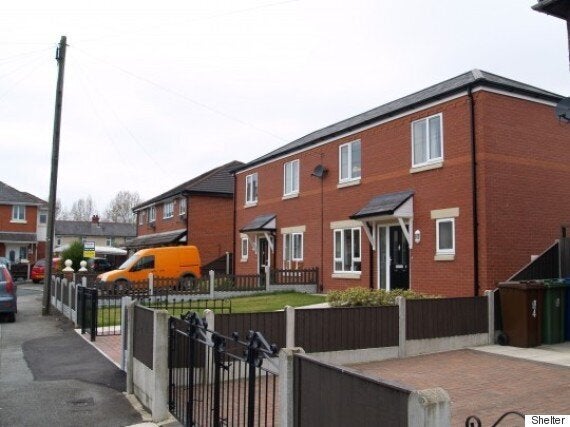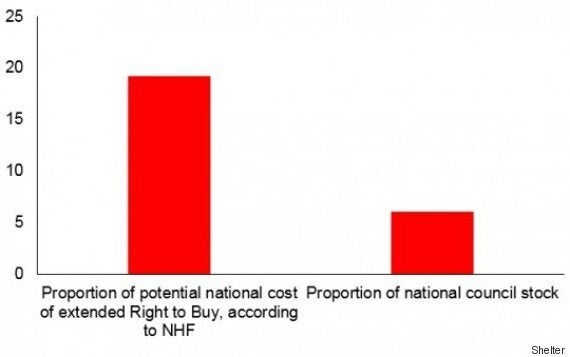
These two semis in Wigan are the only replacement homes built in Greater Manchester for the 863 sold through the Right to Buy since 2012
So, the government has confirmed that the extension of the Right to Buy to all housing association homes will be part of the new government's first Queen's Speech. Like the existing Right to Buy, the scheme will offer huge discounts for tenants of up to £104k, which the government plans to pay for with a £4.5billion bonanza reaped from selling valuable council homes on the open market (i.e. not through the Right to Buy, but to whoever can afford the full market value).
You could call it selling off two affordable homes for the price of one. And at a time when the country has a massive and recognised shortage of affordable homes, stepping up sales of the existing limited supply, to subsidise further sales, might seem like a strange response.
But the government has also made a promise that every affordable home sold will be replaced. They've said that the money raised from the council home sales will be enough to:
- pay for the discount,
- rebuild both homes in the area they were sold,
- pay off some debt,
- and even leave money for a brownfield decontamination fund.
So what's the problem? Housing association tenants get the Right to Buy, and every affordable home gets replaced: surely this a policy that pleases everyone, no?
Well, when the policy was announced as part of the Conservative manifesto, Shelter and the Institute of Fiscal Studies were among those who pointed to the government's record on replacing Right to Buy homes under the current scheme - which has been a rank failure.
Across the country work has only started on one in 10 of the council homes that have been sold since the replacement scheme was introduced: work by the Chartered Institute of Housing suggests that only a minority ever will be. And in some parts of the country it looks much worse.
Probably the hardest hit by the failure to replace Right to Buy homes is the heart of the Northern Powerhouse itself, Greater Manchester, and the conurbation's experience should set off screaming alarm bells about what may happen under the new scheme.
Some 863 social rented homes have been sold in Greater Manchester since 2012, when the promise of one-for-one replacements was first made. Yet of those only two have been replaced: two connected semis on a cul-de-sac in a Wigan suburb.
The reason for this failure to replace can't be pinned on the councils themselves, as some have suggested. This isn't simply a question of local government not playing ball, it stems from the way the replacement scheme has been designed. To put it bluntly, the government has tried to squeeze too much out of too small an amount of money. The money from the forced sale of council homes has to cover:
- the Right to Buy discount offered on a housing association home,
- a payment to the Treasury,
- paying of any debt still owed from building the council home sold, and
- a replacement council home.
But in much of the country, Right to Buy property prices (after the discount) aren't big enough to cover the cost of building a new home once the Treasury has taken its cut. In Manchester this has meant that the City Council has received barely any money to build replacement council homes. In fact, for the first 112 Right to Buy sales in the City, the council received precisely zero pounds and pence to build replacement homes. And Manchester's by no means alone; other councils are in a similar position.
Obviously, this should be a worry because the new replacement scheme sounds like exactly the same sort of creative accountancy as the existing one: trying to squeeze too much out of too little.
It's not just a question of record, though. As under the current scheme, the wider North West is a good example of how some of the fundamental numbers of the new scheme just don't seem to stack up. This is because there just don't appear to be enough high value council homes in the region to cover the cost of the Right to Buy extension there. The National Housing Federation has estimated that the North West is likely to be one of the biggest areas of demand for the extended Right to Buy, but it has one of the smallest and least valuable regional stocks of council homes in the country. Almost 20% of potential sales are in the North West, but only 5% of the council stock.

So it seems inevitable that paying for replacement housing association homes in the North West will require subsidy from council house sales another part of the country (over the Pennines in Leeds, for example, where the council stock is bigger and more valuable). But if receipts from council house sales in Yorkshire flow west to Manchester, how will those homes be replaced in God's Own Country?
The line that stupidity is repeating the same thing and expecting a different result has become something of a cliché. But those who think that you can solve a housing affordability problem by selling affordable homes should take a long, hard look at Greater Manchester's recent experience and think again.
This post first appeared on Shelter's website here